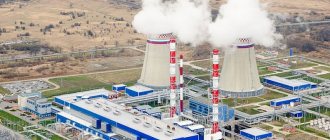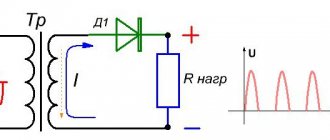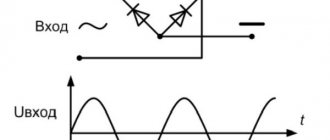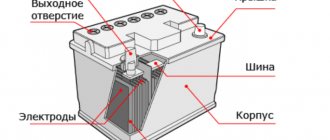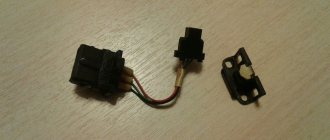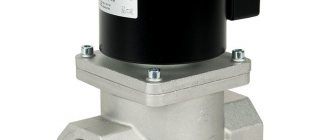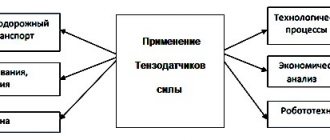The conversion of natural energy resources into electricity is carried out using special installations operating on various principles. Among them, the most widespread are thermal power plants that use liquid, solid and gaseous organic fuels. They generate more than 70% of the world's electricity and are located close to natural resource deposits. Many thermal power plants produce not only electricity, but also thermal energy.
Types of thermal power plants
A standard thermal power plant is a whole complex that includes various devices and equipment that convert fuel energy into electricity and heat.
Such installations differ in parameters and technical characteristics, according to which they are classified:
- In accordance with the types and purpose of the supplied electricity, thermal stations can be regional and industrial. Regional installations are known as GRES or IES and are designed to serve all consumers in the region. Power plants that produce heat are called CHP plants. The power of regional stations exceeds 1 million kW. Industrial power plants are designed to supply electricity and heat to specific enterprises and industrial complexes. Their power is significantly less than that of state district power plants and is installed in accordance with the needs of a particular facility.
- All types of thermal power plants operate on different energy sources. First of all, these are ordinary organic resources used by most thermal power plants and petroleum products. The most widespread are coal, natural gas, and fuel oil. The most advanced installations operate on nuclear fuel and are called nuclear power plants - NPPs.
- Power plants that convert heat energy into electricity can be steam turbine, gas turbine, or mixed steam-gas design.
- The technological diagram of steam pipelines of thermal power plants can be different. In block designs, thermal power plants use identical power plants or power units. In them, steam from the boiler is supplied only to its own turbine and, after condensation, it returns to its boiler. Most of the state district power plants (CHPPs) and thermal power plants were built according to this scheme. Another option involves the use of cross connections, when steam from the boilers is supplied to a common manifold - a steam pipeline, which ensures the operation of the entire steam turbines of the station.
- According to the initial pressure parameters, thermal power plants can be with critical and supercritical pressure. In the first case, Russian standards for TPP-CHP are 8.8-12.8 MPa or 90-130 atmospheres. The second option has higher parameters of 23.5 MPa or 240 atmospheres. Such designs use intermediate superheating and a block circuit.
The most powerful power plant in the world
A story about the operating principle of thermal power plants would not be complete without mentioning records. We all love them so much, right?
The most powerful thermal power plant in the world is the Chinese thermal power plant, called Tuoketuo . Its capacity is 6,600 MW and it consists of five power units of similar power. In order to accommodate all this, it was necessary to allocate an area of 2.5 square kilometers for it.
Tuoketuo Thermal Power Plant.
If the figure of 6,600 MW doesn’t tell you anything, then it is more powerful than the Zaporozhye nuclear power plant (Ukraine). In total, if you include Tuoketuo in the ranking of the most powerful nuclear power plants (forgetting that it is thermal), it will take an honorable third place. This is such power.
I described in detail the operating principle of nuclear power plants in this article. In short, steam is also used there.
Following Tuoketuo in the ranking of the most powerful thermal power plants is the Taichung Thermal Power Plant in China (5,824 MW). From third to fifth place are Surgutskaya GRES-2 in Russia (5,597 MW), Belchatow TPP in Poland (5,354 MW) and Futtsu CCGT Power Plant in Japan (5,040 MW).
Operating principle of a thermal power plant
The basic principle of operation of a thermal power plant is to produce thermal energy from fossil fuels, which is subsequently used to generate electric current.
The concepts of thermal power plant and combined heat and power plant differ significantly from each other. The first installations are so-called pure power plants that produce only electric current. Each of them is also known as a condensing power plant - CES. CHP stands for combined heat and power plant and is a type of thermal power plant. These installations not only generate electricity, but are also thermal, that is, they provide heat to heating and hot water supply systems. This combined use requires special steam turbines with back pressure or an intermediate steam extraction system.
Coal-fired thermal power plant
Coal has long been one of the main sources of energy in people's daily life and production activities. The wide distribution of this type of fuel became possible due to its availability. In many deposits it is located a few meters from the surface of the earth and can be mined using a cheaper open-pit method. In addition, coal does not require any special storage conditions and is stored in ordinary piles near the site.
Industrial use of coal began at the end of the 18th century. Later, when railway transport appeared, coal became the source of motive power for steam locomotives. It was later used in the first thermal power plants built at the end of the 19th century. Many thermal power plants currently operate on coal.
At the very first power plants, coal was burned by placing it on grates. Fuel loading and slag removal were performed manually. Gradually, these processes were mechanized and coal fell onto the grates from the upper bunker. The grate was set in motion and the waste slag was poured into a special receiver.
Modern thermal power plants no longer use lump coal. Instead, coal dust produced in crushers or mills is loaded into the boilers. Fuel is supplied to the burners by compressed air. Once in the firebox, coal dust mixed with air begins to burn, releasing a large amount of heat.
Gas thermal power plants
Second only to coal in importance is natural gas, used by many thermal power plants. This type of fuel has undoubted advantages. Harmful emissions that poison the atmosphere are significantly lower than when burning coal. After combustion, no by-products remain in the form of slag or ash.
The operation of thermal power plants using gas becomes much easier, since in this case the preparation of coal dust is not required. The gas does not require any special preparation and is immediately ready for use. Gas thermal power plants are considered more maneuverable, which is important in situations with changing loads.
The efficiency and efficiency of gas thermal power plants increased significantly when they switched to operating mode with the cycle of combined cycle plants. The fuel is burned not in a boiler, but in a gas turbine. Such installations are intended only for gas and cannot operate on coal dust.
New coal combustion technologies
The efficiency of modern thermal power plants is limited to 34%. The vast majority of thermal power plants still operate on coal, which can be explained quite simply - coal reserves on Earth are still enormous, so the share of thermal power plants in the total volume of electricity generated is about 25%.
The process of burning coal has remained virtually unchanged for many decades. However, new technologies have come here too.
Clean burning of coal (Clean Coal)
The peculiarity of this method is that instead of air, pure oxygen isolated from the air is used as an oxidizing agent when burning coal dust. As a result, a harmful impurity – NOx – is removed from the flue gases. The remaining harmful impurities are filtered out through several stages of purification. The CO2 remaining at the outlet is pumped into tanks under high pressure and subject to burial at a depth of up to 1 km.
"oxyfuel capture" method
Here, too, when burning coal, pure oxygen is used as an oxidizing agent. Only in contrast to the previous method, at the moment of combustion, steam is formed, causing the turbine to rotate. Then ash and sulfur oxides are removed from the flue gases, cooling and condensation are performed. The remaining carbon dioxide under a pressure of 70 atmospheres is converted into a liquid state and placed underground.
Pre-combustion method
Coal is burned in the “normal” mode - in a boiler mixed with air. After this, ash and SO2 - sulfur oxide are removed. Next, CO2 is removed using a special liquid absorbent, after which it is disposed of by burial.
Other types of fuel for thermal power plants
In addition to traditional fuels, thermal power plants also use other energy sources in their work. One such energy resource is fuel oil, which was used in many power plants in the second half of the 20th century.
In modern conditions, the price of petroleum products has increased significantly, so fuel oil has ceased to be the main fuel. It is partially used by coal-fired power plants for kindling. The performance qualities of fuel oil are similar to those of natural gas, however, when it is burned, large quantities of sulfur oxide are released, which pollutes the environment.
In the 20th century, some thermal power plants operated on peat. Currently, this resource is practically not used due to low efficiency compared to gas and coal. Diesel fuel installations are used in small facilities where significant amounts of electricity are not required. Basically, they are intended for remote areas located at a considerable distance from centralized power supply networks.
Thermal power plant efficiency
The main indicator of any thermal power plant is its efficiency. For example, for coal-fired thermal power plants there is a thermal efficiency determined by the amount of coal required to generate 1 kWh of electricity. If at the beginning of the 20s of the last century this figure was 15.4 kg, then in the 60s it dropped to 3.95 kg. Subsequently, coal consumption again increased slightly to 4.6 kg.
The reason for this increase was gas scrubbers, dust and ash collectors, due to which the coal-fired power plant reduced its power output by 10%. Many stations use cleaner coal, which has also led to increased fuel consumption.
The percentage expression of the thermal efficiency of a thermal power plant is no more than 36%, which is associated with high heat losses caused by exhaust gases during combustion. Nuclear power plants with low temperatures and pressure have even lower thermal efficiency - 32%. The highest rate is for gas turbine plants equipped with waste heat boilers and additional steam turbines. The efficiency of power plants with such equipment exceeds 40%. This indicator completely depends on the operating temperatures and steam pressure.
Condensing power plants
Condensing power plants are often called state district power plants (GRES). IES are mainly located near fuel extraction areas or reservoirs used for cooling and condensing steam exhausted from turbines.
Characteristic features of condensing power plants
- for the most part, there is a significant distance from consumers of electrical energy, which necessitates the need to transmit electricity mainly at voltages of 110-750 kV;
- block principle of station construction, which provides significant technical and economic advantages, consisting in increasing operational reliability and facilitating operation, and reducing the volume of construction and installation work.
- The mechanisms and installations that ensure the normal functioning of the station constitute the system of its own needs.
IES can operate on solid (coal, peat), liquid (fuel oil, oil) fuel or gas.
Fuel supply and preparation of solid fuel consists of transporting it from warehouses to the fuel preparation system. In this system, the fuel is brought to a pulverized state for the purpose of further injecting it into the burners of the boiler furnace. To maintain the combustion process, a special fan forces air into the firebox, heated by the exhaust gases, which are sucked out of the firebox by a smoke exhauster.
Liquid fuel is supplied to the burners directly from the warehouse in a heated form by special pumps.
The preparation of gas fuel consists mainly of regulating the gas pressure before combustion. Gas from the field or storage facility is transported through a gas pipeline to the gas distribution point (GDP) of the station. Gas distribution and regulation of its parameters are carried out at the hydraulic fracturing site.
Processes in the steam-water circuit
The main steam-water circuit carries out the following processes:
- The combustion of fuel in the firebox is accompanied by the release of heat, which heats the water flowing in the boiler pipes.
- Water turns into steam with a pressure of 13...25 MPa at a temperature of 540..560 °C.
- The steam produced in the boiler is supplied to the turbine, where it performs mechanical work - it rotates the turbine shaft. As a result, the generator rotor, located on a common shaft with the turbine, also rotates.
- The steam exhausted in the turbine with a pressure of 0.003...0.005 MPa at a temperature of 120...140°C enters the condenser, where it turns into water, which is pumped into the deaerator.
- In the deaerator, dissolved gases are removed, and primarily oxygen, which is dangerous due to its corrosive activity. The circulating water supply system ensures that the steam in the condenser is cooled with water from an external source (reservoir, river, artesian well). Cooled water, having a temperature not exceeding 25...36 °C at the outlet of the condenser, is discharged into the water supply system.
An interesting video about the operation of the thermal power plant can be viewed below:
To compensate for steam losses, make-up water, which has previously undergone chemical purification, is supplied to the main steam-water system by a pump.
It should be noted that for the normal operation of steam-water installations, especially with supercritical steam parameters, the quality of the water supplied to the boiler is important, therefore the turbine condensate is passed through a system of desalting filters. The water treatment system is designed to purify make-up and condensate water and remove dissolved gases from it.
At stations using solid fuel, combustion products in the form of slag and ash are removed from the boiler furnace by a special slag and ash removal system equipped with special pumps.
When burning gas and fuel oil, such a system is not required.
There are significant energy losses at IES. Heat losses are especially high in the condenser (up to 40..50% of the total amount of heat released in the furnace), as well as with exhaust gases (up to 10%). The efficiency of modern IES with high steam pressure and temperature parameters reaches 42%.
The electrical part of the IES is a set of main electrical equipment (generators, transformers) and electrical equipment for auxiliary needs, including busbars, switching and other equipment with all connections made between them.
The station's generators are connected into blocks with step-up transformers without any devices between them.
In this regard, a generator voltage switchgear is not being built at the IES.
Switchgears for voltages of 110–750 kV, depending on the number of connections, voltage, transmitted power and the required level of reliability, are made according to standard electrical connection diagrams. Cross connections between units take place only in high voltage switchgear or in the power system, as well as for fuel, water and steam.
In this regard, each power unit can be considered as a separate autonomous station.
To provide electricity for the station's own needs, taps are made from the generators of each block. To power powerful electric motors (200 kW or more), generator voltage is used; to power lower-power motors and lighting installations, a 380/220 V voltage system is used. Electrical circuits for the station’s own needs may be different.
Another interesting video about the work of a thermal power plant from the inside:
